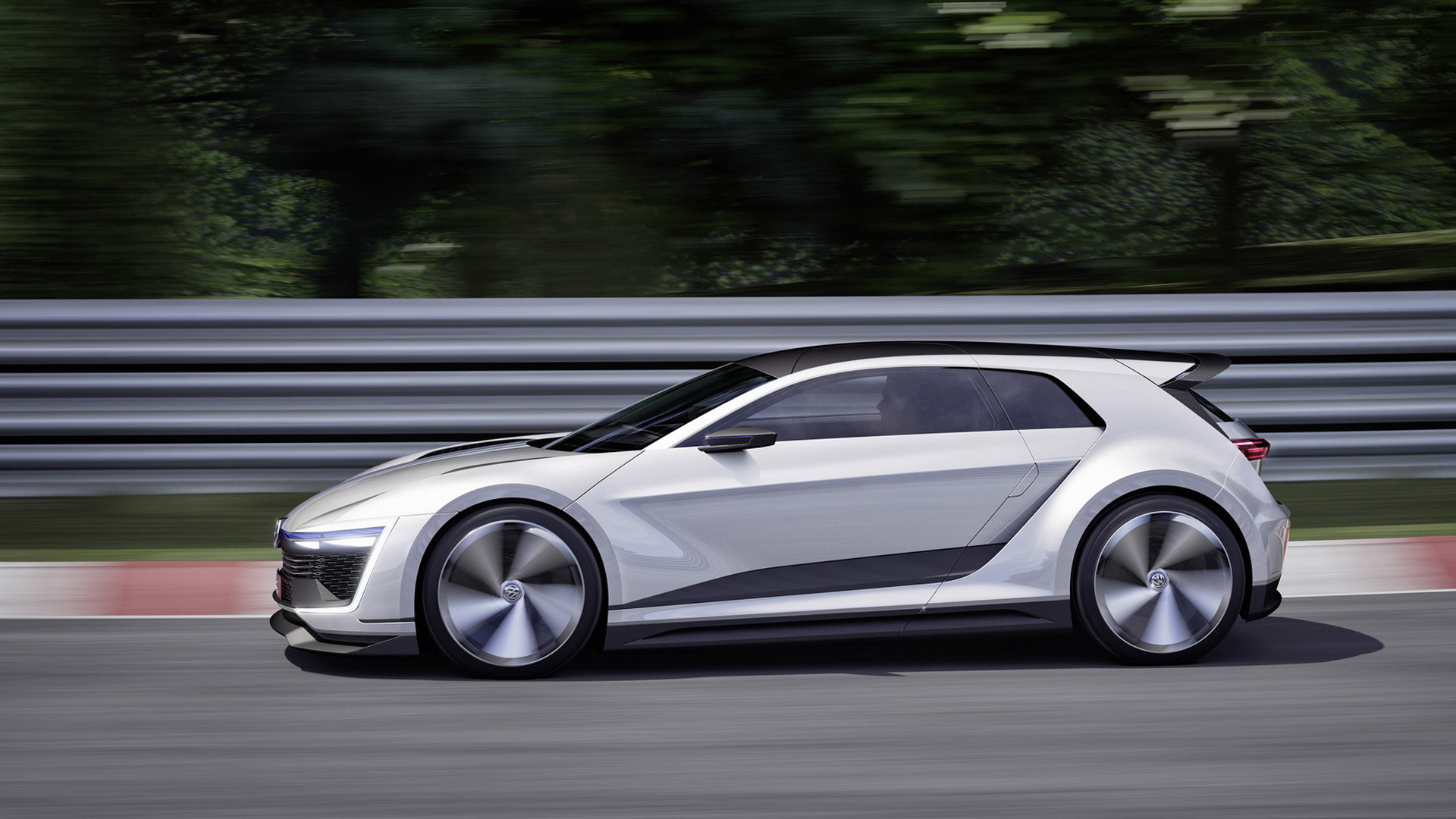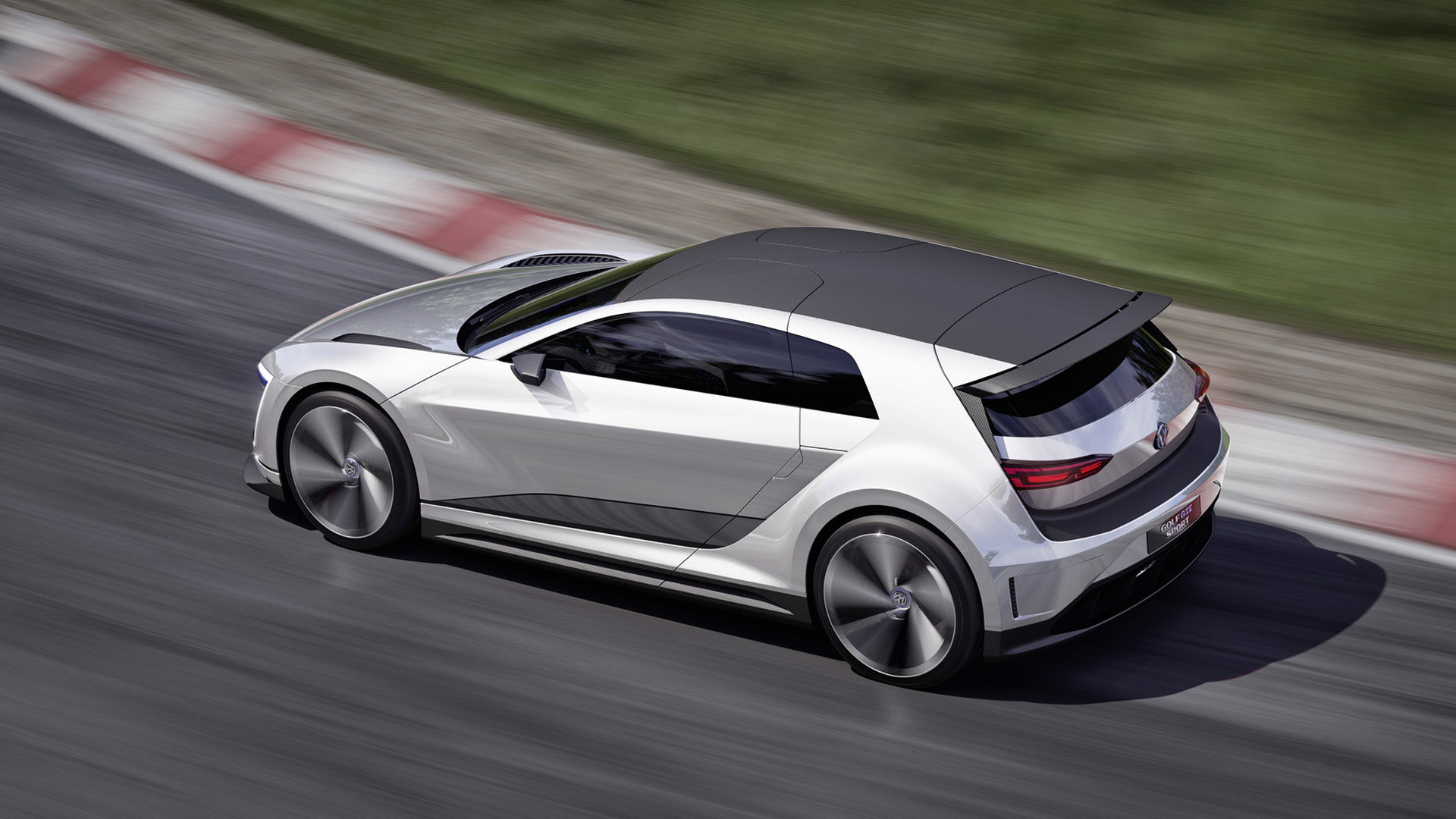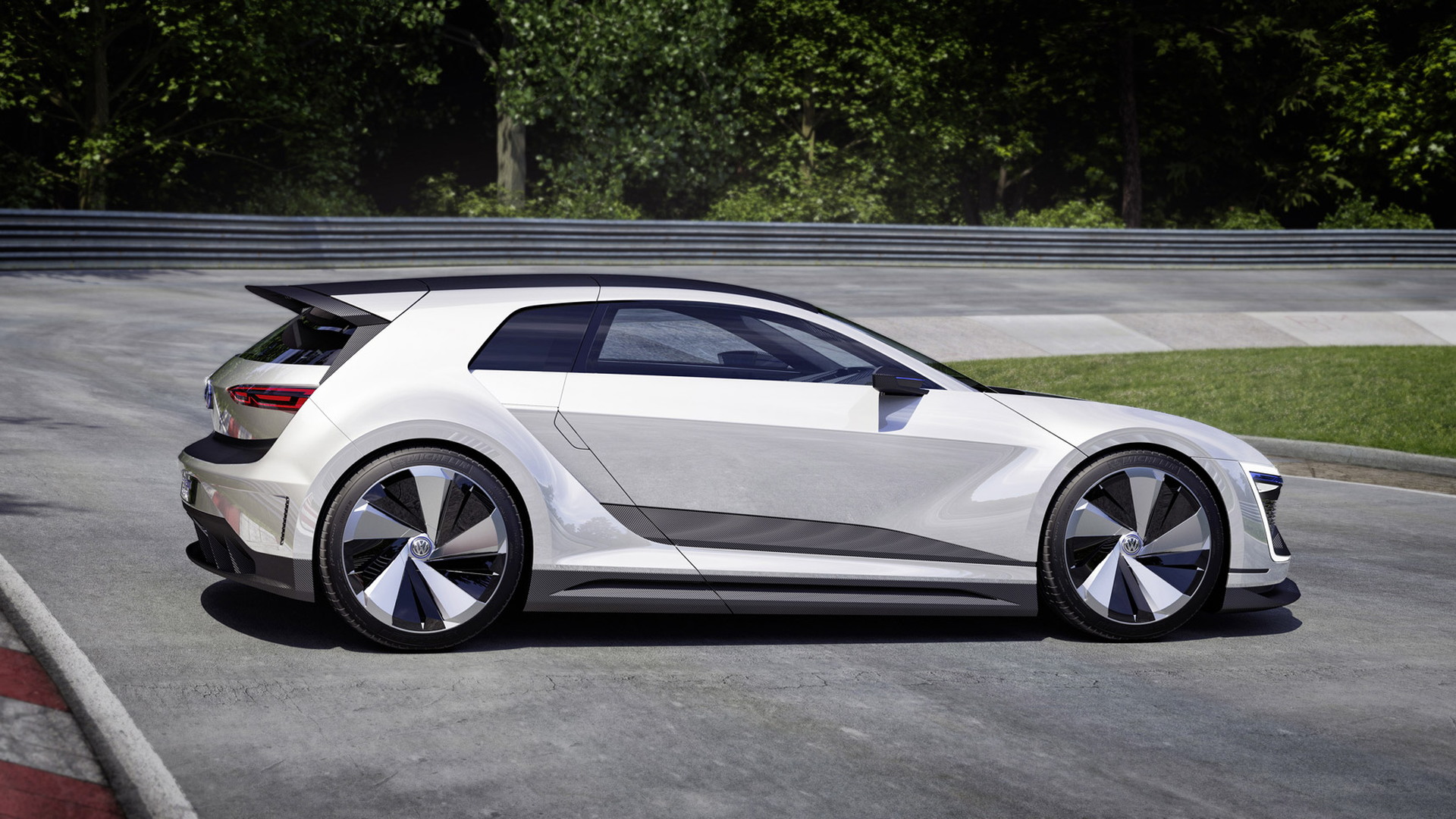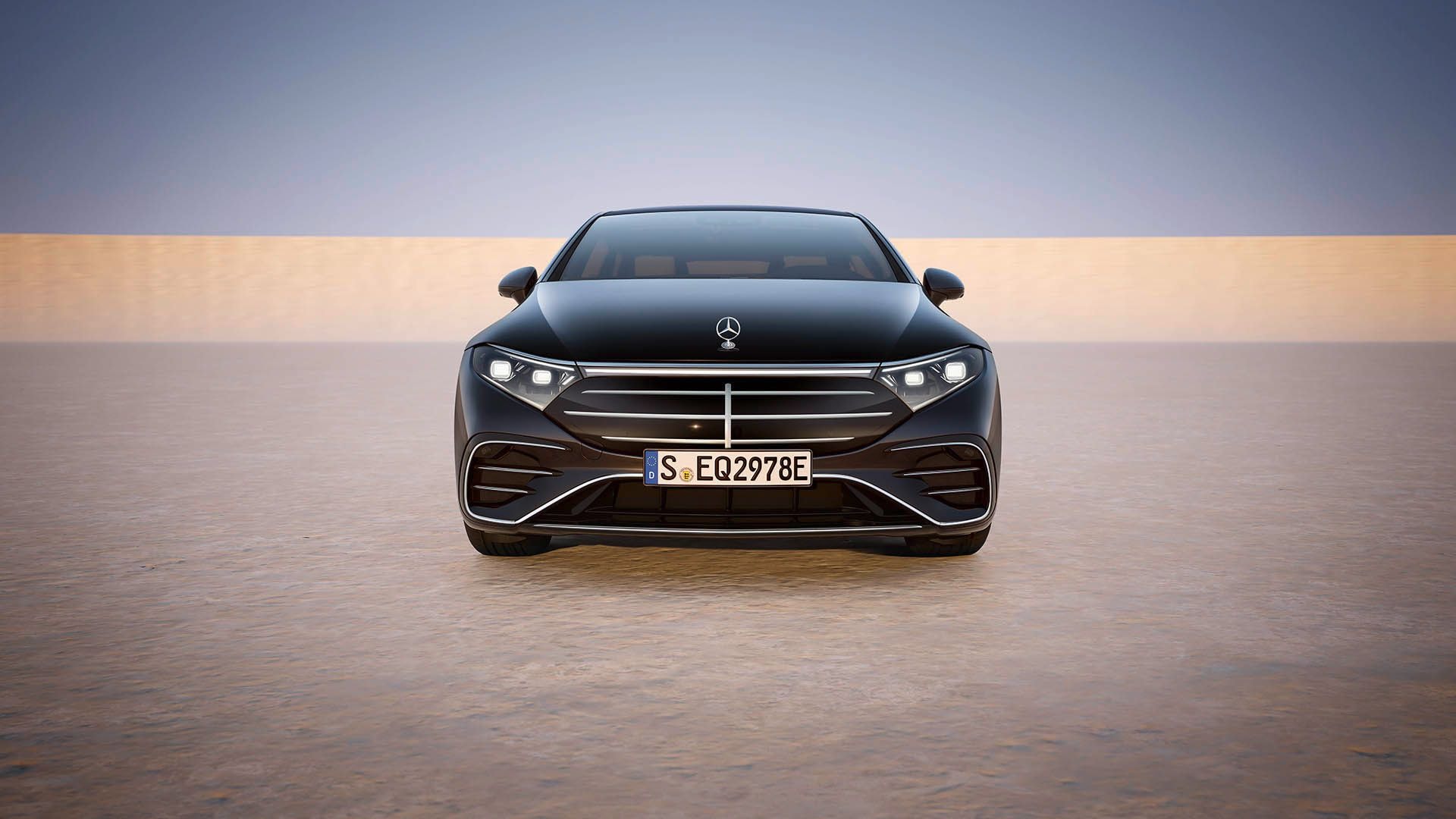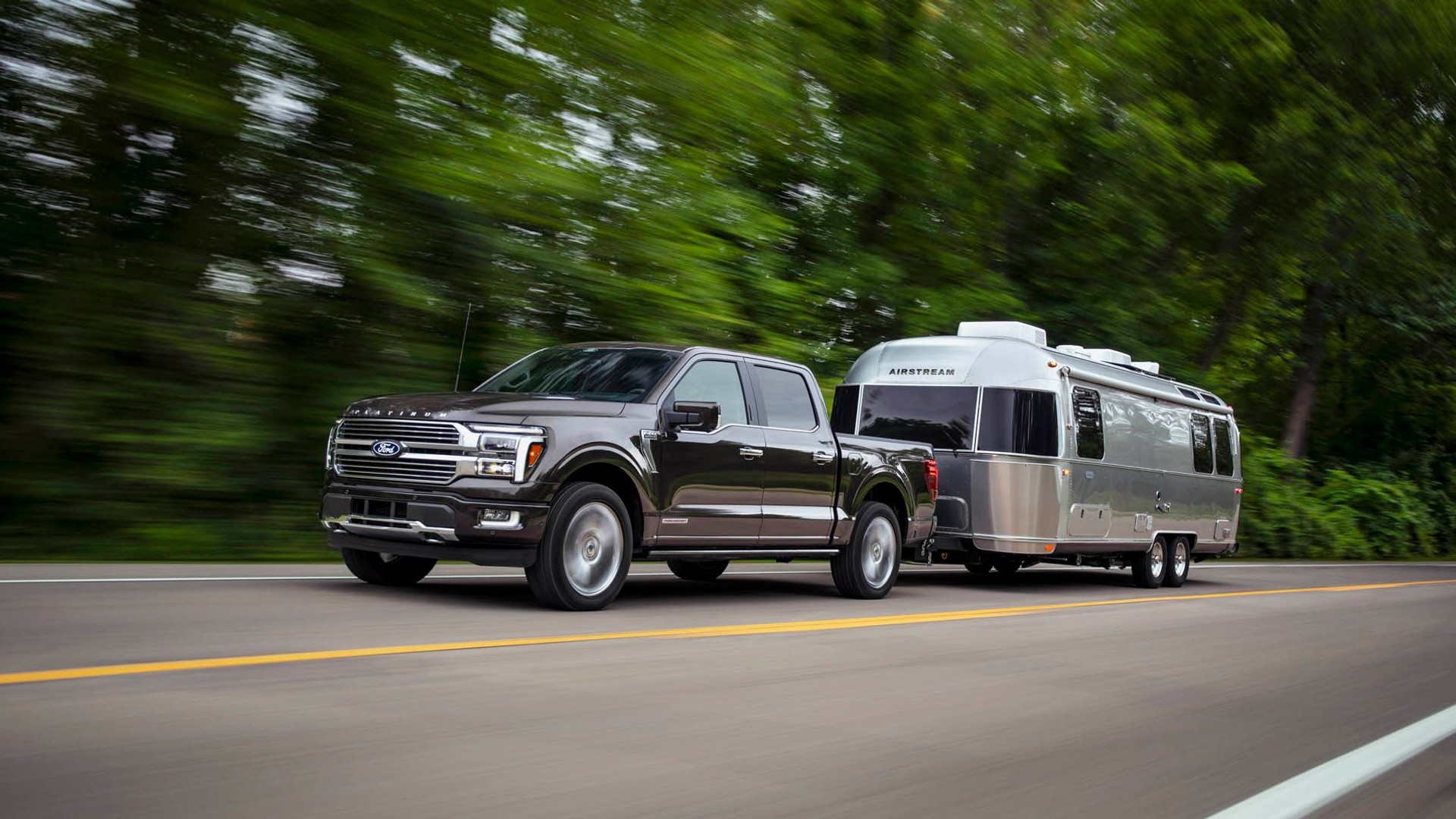Could the Volkswagen GTI and the all-wheel-drive Golf R high-performance compact-car models be headed toward a plug-in hybrid future?
One new concept, the Golf GTE Sport, proposes that—while clearly aiming more than a few years into the future.
A May gathering at Austria’s Lake Wörthersee has become a tradition for Volkswagen GTI fans—and for the VW Group to show off a bit, with a glimpse of a potential design-and-technology future.
There, while a special Golf GTI Clubsport concept—headed for production next year—celebrates the 40th birthday of the GTI. the automaker is looking further forward with a plug-in hybrid, carbon-bodied sports-car concept called the Golf GTE Sport, that VW says “bridges the gap between road cars and racing sport cars.”
The GTE Sport also marks the debut of a new, racing-influenced three-tier digital instrument arrangement. There’s a special feature for visualization of the racing line, and seating is provided by two monocoque perches with five-point racing harnesses.
Under the hood, there’s a 295-hp, 1.6-liter turbocharged, direct-injected four-cylinder engine—out of VW’s Polo R WRC (World Rally Car). It’s assisted by two electric motors, one of them located in front, within the housing of the six-speed DSG dual-clutch gearbox, and the other located at the rear wheels. Each is 85 kW, capable of delivering 243 lb-ft to the front or 199 lb-ft to the rear.

Volkswagen Golf GTE Sport concept, 2015 Wörthersee Tour
Impressive efficiency, all-electric mode
In the NEDC cycle, VW says that this sports car achieves just nearly 118 mpg (U.S.). There are three modes, selectable via an overhead switch: an E-Mode (all-electric), a Hybrid Mode, and GTE-Mode (performance-oriented).
Just like the Volkswagen Golf GTE that’s already sold in Europe—and the Audi A3 e-tron that’s on the way for the U.S. market—you can drive in the Hybrid Mode to gradually bring the battery back up to a full charge.
DON'T MISS: Volkswagen Golf GTE Plug-In Hybrid: First Drive Of Prototype (Mar 2014)
You can then engage E-Mode again when desired (when you’re in another urban area, for instance).
In Hybrid Mode, during coasting, the gasoline engine is completely disconnected from the system, and the electric motors help recover energy.

Volkswagen Golf GTE Sport concept, 2015 Wörthersee Tour
The all-wheel drive system, which is much like the one described for the Cross Coupe GTE Concept from the Detroit Auto Show earlier this year, allows an “electric propshaft” mode through which the front electric motor starts to function as a generator counterpart to the motor at the rear axle.
The gasoline engine and braking serve to feed the power source at the rear wheels, while the gasoline engine provides power at the front wheels.
The Golf GTE Sport has been designed for both normal road driving and racetrack use, yet it’s been tuned and balanced for the North Loop of Germany’s Nürburgring.
The body is made mostly of carbon, which greatly helps keep weight down (no figures were released), and it’s been designed for an optimum weight distribution and neutral behavior for the all-wheel drive system.

Volkswagen Golf GTE Sport concept, 2015 Wörthersee Tour
Tailpipe-emissions-free, or near-exotic performance at the flip of a switch
In GTE-Mode, the total system output is 394 hp and 494 lb-ft, and the GTE Sport is capable of getting to 62 mph in just 4.3 seconds, while top speed is 174 mph. Yet total driving range in E-Mode (battery capacity not mentioned) is 37 miles.
From a design standpoint, with the GTE Concept, VW says that it’s showing how Golf GT models could develop in the future.
The GTE Sport, at 162.5 inches long and 73.6 in wide, is about five inches shorter than today’s Golf but about three inches wider.

Volkswagen Golf GTE Sport concept, 2015 Wörthersee Tour
Even more dramatic is how much lower it is; overall height, at 48.6 inches, is nearly 9 inches lower than the current 2015 Golf.
From some of the rear angles, it looks a bit like a shooting-brake sports car--or perhaps its proportions nod to the current VW Scirocco coupe, based on the previous-generation Golf, that isn't sold in North America.
ALSO SEE: Forbidden Fruit: We Drive The Volkswagen Scirocco R (Dec 2013)
The two-level side-profile design builds on Golf heritage, while the wide-body look contributes to aerodynamics and brake cooling. The door sill itself is designed as a functional air splitter, while scissor-style doors closely parallel those used in the XL1.
The concept also borrows the blue horizontal grille line of the production Golf GTE, bringing it to the concept’s lower grille. Rear styling is influenced by the tail unit of an airplane, while visible carbon is used extensively in back.
VW calls the interior ‘cocoon-like,’ and the carbon-clad steering wheel (with shift paddles for gear selection) and ‘floating’ dash elements are also motorsport-influenced.

Volkswagen Golf GTE Sport concept, 2015 Wörthersee Tour
Rally-racing-influenced looks, layout
Following rally racing, where the passenger/navigator is an integral part, the passenger gets his or her own display of gear and engine speed, or a selectable Data Mode with acceleration and lateral force.
It’s a thought-provoking concept. Within the VW Group, we see a mashup of influences, ranging from the Porsche 918 plug-in hybrid supercar to the frugal, delicate XL1 and the GTI Roadster Concept of last year.
Would you consider a high-performance, rally- or racing-influenced all-wheel-drive sports car like this if it also had extraordinary efficiency and an all-electric mode? You can bet VW’s thinking about it.
_________________________________________

